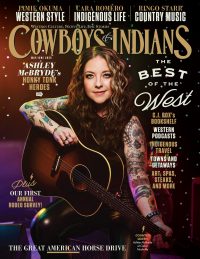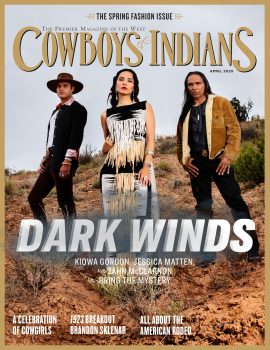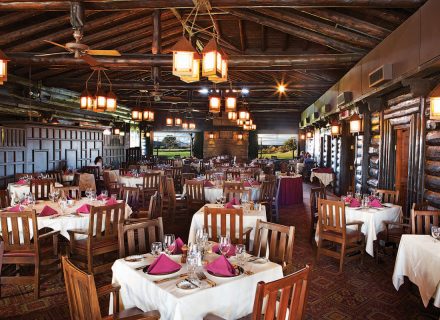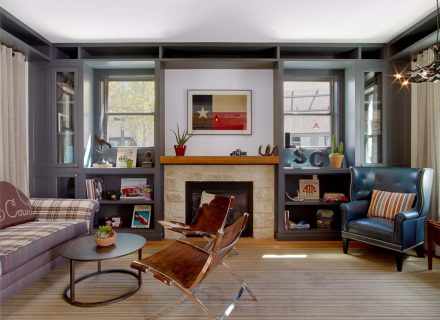The El Tovar Hotel and the Bright Angel Camp offer a refined taste of history at Grand Canyon National Park.
There’s a legend about a mason who, while working on a stone wall at the Grand Canyon’s South Rim in 1935, fell in love with a female employee of the El Tovar Hotel, a Grand Canyon Village resort owned by the Fred Harvey Company. At the time, she was living in the property’s all-girls dormitory. To show his affection, the federal Civilian Conservation Corps Company 819 worker placed a heart-shaped rock in the wall so the girl could see it from her room window. At night, the man would leave a lighted candle next to the stone heart to ensure its visibility. The Brown Building is gone, but the gift the smitten mason left for his beloved remains. It sits between the El Tovar and another Grand Canyon Village hotel property. There are other enduring mysteries at the El Tovar, including vanishing apparitions and a well-appointed, unknown gentleman who welcomes guests to holiday parties.
Whether reports of the supernatural and lovelorn are true, El Tovar has been welcoming guests since it was opened in 1905 by the Fred Harvey Company, owner-operator of the Harvey House chain of restaurants, hotels, and hospitality services alongside railroads and iconic roadways such as Route 66. They became synonymous with excellent accommodations, food, and service. This particular Fred Harvey property was designed by Charles Whittlesey for the Atchison, Topeka, and Santa Fe Railway and built a stone’s throw from the edge of the natural wonder. It appealed to the upper classes with a blend of a Swiss chalet and Norwegian villa elements, featuring the logs frequently used in siding, flooring, and rafters that have come to define the wilderness aesthetic of Western lodges. For wealthy Americans visiting the Grand Canyon, El Tovar became the epitome of continental refinement fused with rugged American sensibility. Whittlesey’s design reminded them of their travels in Europe, an important selling point for well-to-do tourists of the time. It’s where the affluent stayed and played.
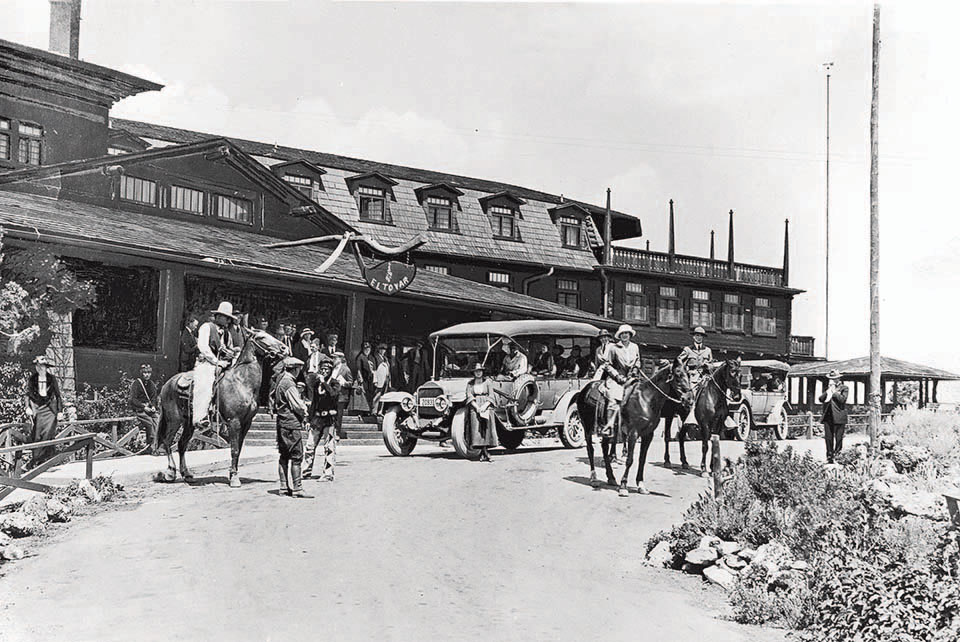
Today, thanks to renovations undertaken in the 1980s, the resort has a relaxed atmosphere and is updated with modern amenities while retaining whispers of the past. The balconies and terraces reminiscent of Swiss chalets remain. The windows are new and improved for temperature control. A stone foundation extension along one wing adds space without diminishing the historic feel of the lodge. And, of course, there is still the heart-shaped stone.
But the El Tovar has more going for it than its refined accommodations. It continues to offer exceptional meals with great service, albeit without its original waitresses, the renowned Harvey girls. These female employees dressed in white uniforms and offered precise, smile-punctuated service across Fred Harvey’s properties and eateries. They were a draw unto themselves.
El Tovar’s rustic chic dining space was built from native limestone and exposed Oregon pine, which George Wharton James described as “brown as a coffee berry” in his 1910 guide to the Grand Canyon. Back then, customers enjoyed $1 breakfasts and lunches surrounded by murals representing Hopi, Apache, Mojave, and Navajo customs. Dinner was a mere $1.50. Tables were adorned with fresh flowers, glass, and silver, and tableware included “old brass dishes, antique Dutch and English platters, and Indian ollas, displayed on the plate rail,” James wrote in his guidebook. He also noted hotel guests hailed from all over. Among them could be an English globe-trotter, a Chicago banker, an Arizona rancher, or a Harvard professor.
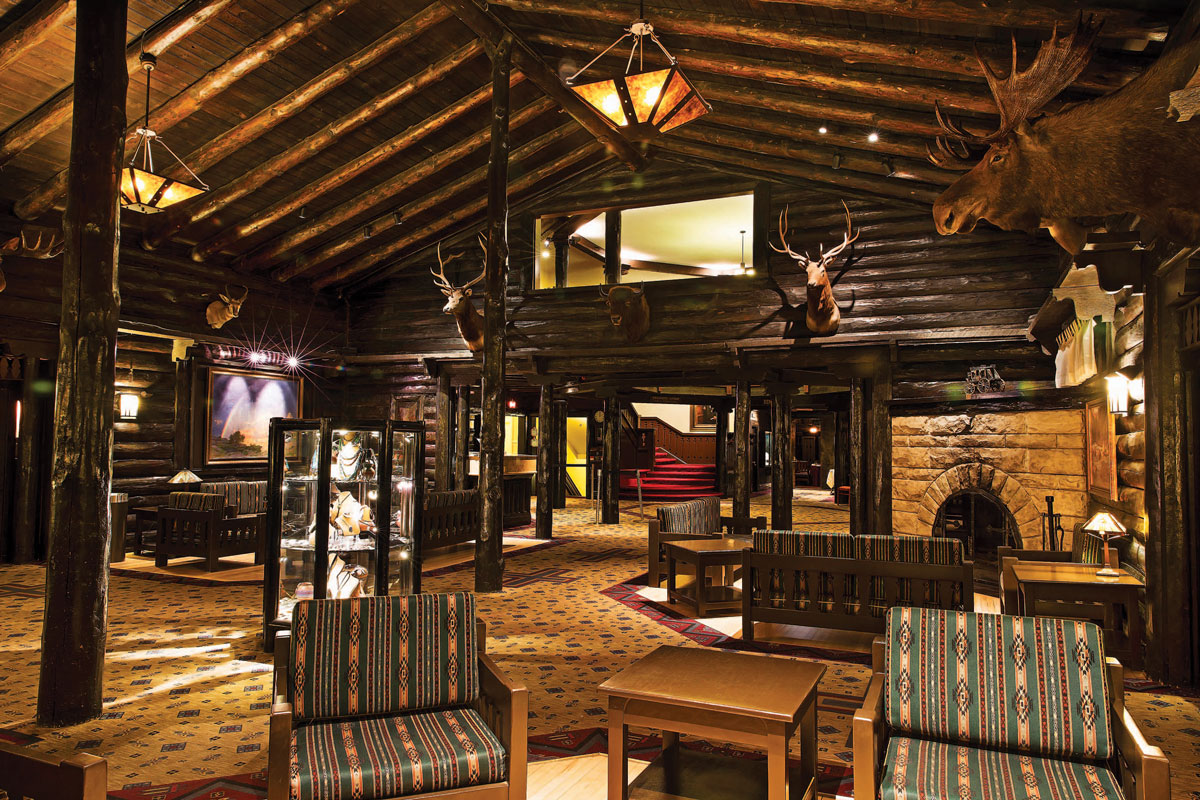
Whatever demographic an El Tovar guest fell into, he or she could choose to dine on an array of elegant dishes sourced from nearby or hauled in via train. One menu developed for an Elks Lodge ball was described as a “work of art” in a travelogue published in a July 1906 edition of the Albuquerque Journal newspaper. El Tovar’s kitchen pulled out all the stops and did so with dazzling flourish by naming some of the dishes after members: canape caviar Harrington, green turtle McCormick soup, Columbia River salmon sauce Banks, sliced cucumbers a la Hagan, spring turkey au Uncle Charley Clusker, ice cream à la Christopher, and a Mocha Henking cake. General menu selections were tempered in the early 1920s with such fare as chicken gumbo, boiled salmon, sweetbreads, roast goose, chile beans, creamy parsley-garnished mashed potatoes, and a fruit sundae topped with hot rum-strawberry sauce.
Off the dining space’s main entrance is a private dining room, with walls that were at one time festooned with reproductions of the ancient deer petroglyphs discovered nearby. Not much has changed since the early days. The dining room looks very much like it did back in the day, and the original muralist’s great-granddaughter is a server at the restaurant.
The 1955 huevos rancheros is a hearty dish that includes two large eggs, refried beans, and corn tortillas topped with enchilada sauce, spicy pepper jack cheese, cooling sour cream, green chiles, and black olives.
If visitors couldn’t afford the splashy trappings of El Tovar in 1905, they could choose to stay at the less-expensive Bright Angel Lodge & Cabins, another Fred Harvey Company property, adjacent to the upmarket lodge. The affordable option offered economical cottages and rooms and meals starting at 35 cents at the hotel’s café. The available “wholesome and thoroughly comforting” dishes, to use James’ words, served by Harvey girls included halibut, spring chicken, British-style potted club steak (beef under a layer of clarified butter), veal cutlet Milanese, lamb with mint jelly, and a variety of grilled steaks. Dessert included layer cakes, apple or lemon meringue pie, ice cream, sherbet, or watermelon. Although the food was decidedly not upscale, it was clearly not shabby grub.
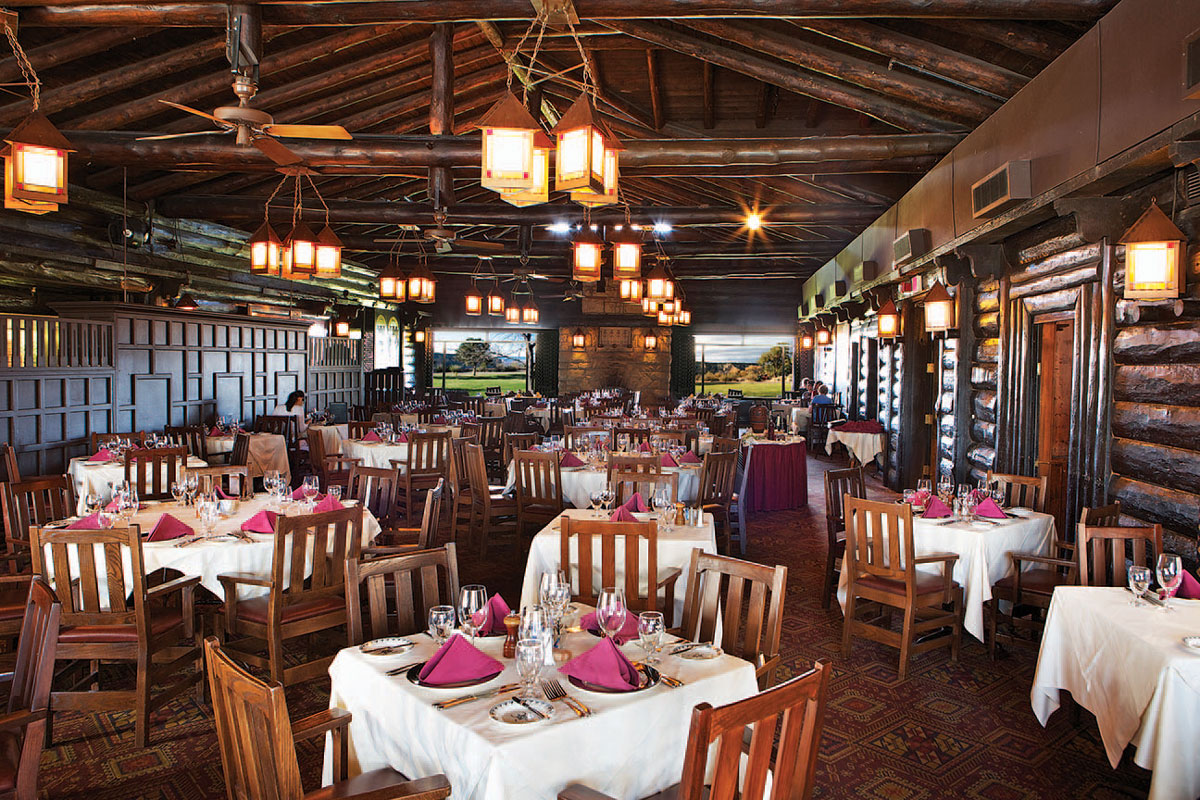
Today, customers at the El Tovar Dining Room and Bright Angel’s Harvey House Café can feast on historic platters as well as modern classics. El Tovar diners in search of a taste of the lodge’s heyday can order the 1947 Chicken El Tovar, which features tender boneless chicken breasts served over angel hair pasta with a creamy mushroom sherry sauce with sides of wilted fresh spinach and fresh veggies. The French onion soup with its beefy broth comes in a traditional crock and has been a staple on the menu for years. When the meals are placed in front of a diner, one cannot help but be transported to the past. All the meals are served on HF Coors replicas of the original 1936 Mimbreño china designed by Mary Jane Colter, chief architect and decorator for the Fred Harvey Company from 1902 to 1948. Then the tasting begins and the palate embarks on a historic culinary journey.
Contemporary Southwestern-inspired dinner selections include a signature salmon tostada that features wild-caught Alaskan salmon and corn tortillas from Flagstaff, Arizona’s own Tortilla Lady. They’re made with Arizona corn and flour and are non-GMO. The Southwest is represented on the plate with fresh organic greens, a tequila vinaigrette, corn salsa, tangy lime sour cream, and roasted poblano-black bean rice. The crispy roast duck features a sweet and spicy chipotle-cherry demi-glace paired with nutty wild and brown rice pilaf.
There’s a legend about a mason who, while working on a stone wall at the Grand Canyon’s South Rim in 1935, fell in love with a female employee of the El Tovar Hotel
The pan-seared Arizona hand-cut fillet mignon is cooked to perfection and is accompanied by a roasted jalapeño chimichurri and roasted fingerling potatoes. Customers of the Harvey House Café can nosh on healthy diner-style meals that include the 1938 seasonal fruit sampler. The 1955 huevos rancheros is a hearty dish that includes two large eggs, refried beans, and corn tortillas topped with enchilada sauce, spicy pepper jack cheese, cooling sour cream, green chiles, and black olives. It’s served with crispy hash browns or a fresh fruit salad. Then there is a tried-and-true American staple in the fluffy 1953 buttermilk pancakes for breakfast.
Historic lunch items include a 1938 Ponderosa chicken club that features grilled chicken covered with bacon, melted cheddar cheese, lettuce, tomato, and Dijon mustard. Throwback dinners include the 1940 Cobb salad and the 1939 Tom Turkey platter.
El Tovar’s signature Thanksgiving meal is composed of sliced slow-roasted turkey served with creamy sweet potatoes, mixed vegetables, and a tart mango-cranberry sauce. A bubbly 1940 fruit cobbler and a creamy 1945 New York-style cheesecake are among the desserts at Bright Angel’s Harvey House Café. Modern selections have playful names with nods to the area like The Hiker’s Chicken Caesar Salad, Trailblazing Fajitas, and Moqui Chicken. Regardless of the order, diners get a feel of the past because the meals are served on the Fred Harvey Company’s traditional blue-chain pattern.
For more information on the El Tovar Hotel or to make reservations, visit the resort’s website.
Photography: Courtesy Xanterra Parks
Subscribe to the forthcoming monthly Taste of the West e-newsletter below.
From the February/March 2019 issue.



